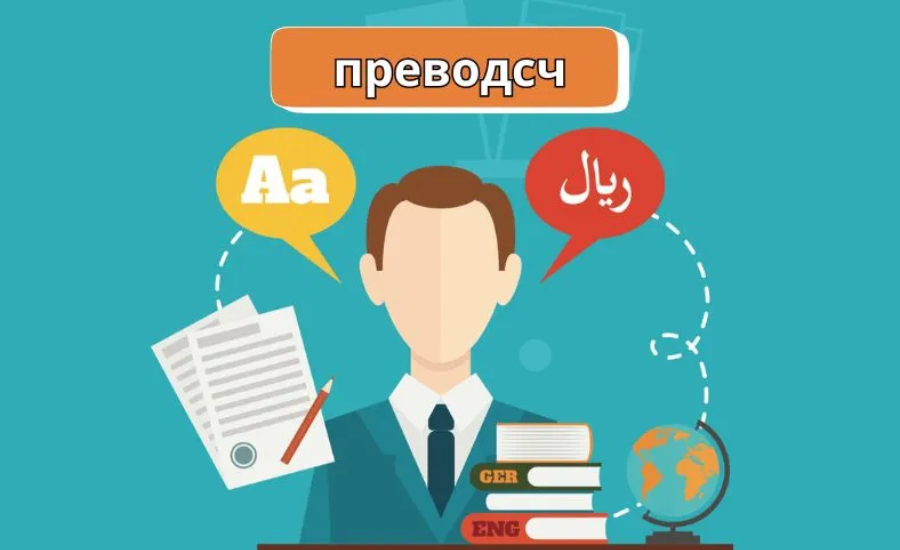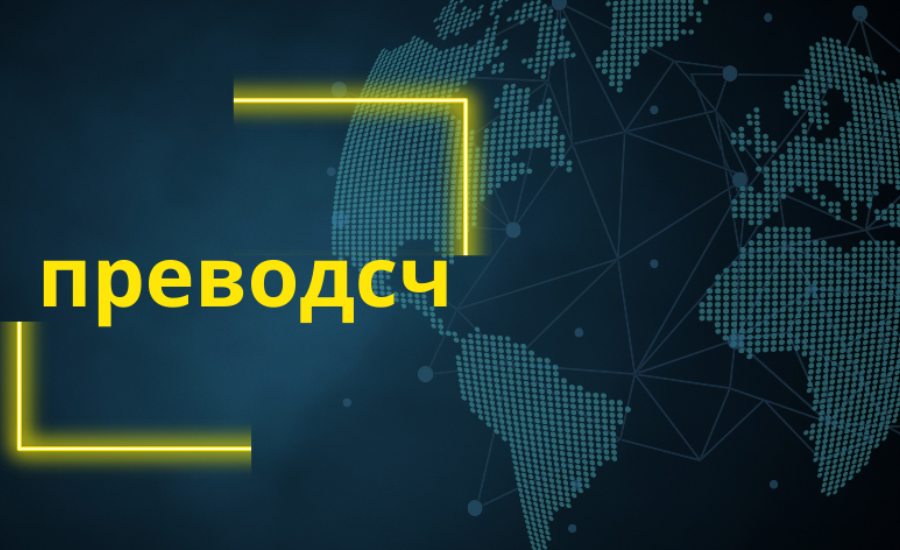In our increasingly interconnected world, effective communication is crucial for international interactions. This is where the concept of “преводсч,” a Russian term meaning “translator” or “interpreter,” comes into play. As businesses, organizations, and individuals navigate linguistic boundaries, the demand for smooth and accurate translation services becomes more evident. This article delves into the significant role of “преводсч” in breaking down language barriers and fostering meaningful communication. By exploring its historical origins and modern applications, we will uncover how “преводсч” is revolutionizing global connections and collaboration.
Historical Roots of Translation

Early Beginnings
The concept of translation has its roots in ancient civilizations, where scribes and scholars were tasked with translating religious texts and literary works to preserve and share knowledge and culture. These early translators were instrumental in spreading information across various regions and languages, ensuring that wisdom and stories were not confined by linguistic boundaries.
Evolution Through the Ages
Over the centuries, the art of translation has become increasingly refined and specialized. The invention of the printing press in the 15th century marked a significant milestone, as it greatly enhanced the ability to distribute translated texts. This technological breakthrough made knowledge more accessible to a broader audience and significantly boosted cultural exchange.
The Modern “преводсч”
Technological Advancements
In the digital era, technology has revolutionized the field of translation. Advanced algorithms, artificial intelligence (AI), and machine learning have led to the development of sophisticated translation tools and platforms. These technological innovations facilitate instant translations, helping bridge communication gaps in real-time. With the click of a button, individuals and businesses can translate documents, conversations, and even websites, making cross-linguistic communication more efficient than ever before.
Professional Translation Services
Despite the rapid advancement of technology, human translators remain essential. Professional translation services provide a level of accuracy, cultural sensitivity, and contextual understanding that machines often struggle to achieve. “Преводсч” professionals excel in capturing the subtleties and nuances of language, ensuring that the intended message is conveyed accurately and effectively. Their expertise is crucial for translating complex texts, legal documents, and creative works where precision and cultural context are paramount.
Applications of “преводсч”

Business and Trade
In the world of international business, “преводсч” services are indispensable for facilitating negotiations, drafting contracts, and executing marketing strategies. Accurate translation of documents and communications ensures that companies can operate seamlessly across borders, preventing misunderstandings and fostering robust business relationships. Effective translation helps businesses navigate cultural differences, comply with local regulations, and effectively communicate their value propositions to diverse markets.
Education and Academia
Translation is crucial for the global dissemination of knowledge. Academic papers, research findings, and educational materials are translated to make them accessible to a broader audience, fostering collaboration and innovation across linguistic boundaries. By translating scholarly work, educators and researchers can share their discoveries and insights with peers around the world, advancing collective understanding and progress in various fields of study.
Healthcare and Legal Systems
Accurate translation is vital in critical fields like healthcare and law. Medical translators and interpreters play a crucial role in ensuring that patients receive accurate information about their health, treatment options, and care plans, regardless of language barriers. In the legal arena, interpreters and translators ensure that non-native speakers understand their rights and obligations, promoting justice and fairness in legal proceedings. By providing clear and accurate translations, these professionals help maintain the integrity of healthcare and legal systems, ensuring that everyone receives the necessary support and information.
Tips for Choosing the Right “преводсч” Service

To ensure you select the right “преводсч” (translator or interpreter) service, it’s crucial to consider several key factors:
- Reputation and Reviews: Look into the reputation of the service provider by reading reviews and testimonials from previous clients. This feedback can provide valuable insights into the quality, reliability, and customer satisfaction of the service.
- Expertise in Specific Languages and Subjects: Ensure that the service has expertise in the specific languages and subject matters relevant to your needs. Specialized knowledge in areas like legal, medical, or technical translation can significantly impact the accuracy and effectiveness of the translations.
- Turnaround Time and Pricing: Evaluate the service’s turnaround time to ensure it aligns with your project deadlines. Additionally, consider the pricing structure to determine if it fits within your budget. Balancing efficiency with affordability is essential for a successful partnership.
- Communication Channels and Customer Support: Assess the service provider’s communication channels and the availability of customer support. Effective communication and responsive customer service can greatly enhance your overall experience, ensuring smooth and timely resolution of any issues.
By carefully considering these factors, you can choose a “преводсч” service that meets your specific needs and ensures high-quality, accurate translations.
Challenges and Future Prospects
Maintaining Accuracy and Cultural Relevance
One of the foremost challenges in translation is preserving both accuracy and cultural relevance. Idiomatic expressions, cultural references, and contextual nuances often pose difficulties for direct translation. Professional “преводсч” services are essential in overcoming these challenges, as they ensure that translations are not only linguistically accurate but also culturally appropriate. Expert translators understand the subtleties of both the source and target languages, allowing them to convey the intended message effectively while respecting cultural differences.
Integration of AI and Human Expertise
The future of translation is in the seamless integration of artificial intelligence (AI) and human expertise. AI-driven translation tools can process large volumes of text swiftly and efficiently, making them invaluable for handling extensive translation tasks. However, human translators bring critical thinking, cultural awareness, and nuanced understanding that machines cannot replicate. By combining the speed and efficiency of AI with the deep insight and precision of human translators, the quality of “преводсч” services is significantly enhanced. This synergy promises to advance the field of translation, making it more effective and reliable for global communication.
FAQS
1. What is “преводсч”? “Преводсч” is a Russian term meaning “translator” or “interpreter.” It refers to professionals who translate spoken or written content from one language to another, facilitating communication across linguistic boundaries.
2. How has the role of translators evolved over time? The role of translators has evolved from ancient scribes translating religious and literary texts to modern professionals using advanced technology for real-time translation. The invention of the printing press and digital tools has significantly enhanced the accessibility and efficiency of translations.
3. Why are human translators still important despite technological advancements? Human translators are essential for ensuring accuracy, cultural sensitivity, and contextual understanding that machines often lack. They are adept at capturing the nuances of language and providing precise translations for complex texts, legal documents, and creative works.
4. What are the main applications of “преводсч” services? “Преводсч” services are crucial in various fields, including international business, education, healthcare, and legal systems. They facilitate negotiations, academic collaborations, patient care, and legal proceedings by providing accurate and contextually appropriate translations.
5. What should I consider when choosing a “преводсч” service? When selecting a “преводсч” service, consider factors such as the provider’s reputation and reviews, expertise in specific languages and subjects, turnaround time, pricing, communication channels, and customer support.
6. How do AI and human expertise complement each other in translation? AI-driven tools can process large volumes of text quickly and efficiently, while human translators bring critical thinking, cultural awareness, and nuanced understanding. The integration of AI and human expertise enhances the quality and reliability of translation services.
Conclusion
In our increasingly interconnected world, effective communication across linguistic boundaries is vital. The role of “преводсч” (translator or interpreter) is crucial in breaking down language barriers and fostering meaningful interactions. From its historical roots in ancient civilizations to modern applications driven by technological advancements, translation has continually evolved to meet the needs of global communication.
While AI and machine learning have revolutionized the field, the importance of human translators cannot be overstated. Professional translation services provide the accuracy, cultural sensitivity, and contextual understanding necessary for high-quality translations. In critical fields such as international business, education, healthcare, and law, “преводсч” services ensure clear and effective communication, supporting collaboration, innovation, and justice.
By carefully choosing the right “преводсч” service and integrating AI with human expertise, we can overcome the challenges of translation and enhance global connections. As we look to the future, the synergy between technology and human skill promises to further advance the field of translation, making it more efficient and reliable for everyone.
Stay in touch for more updates and alerts: AiyiFan!
